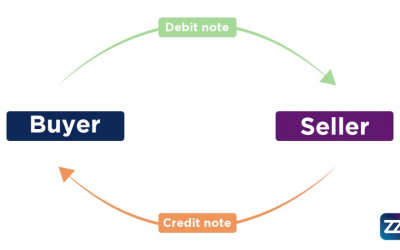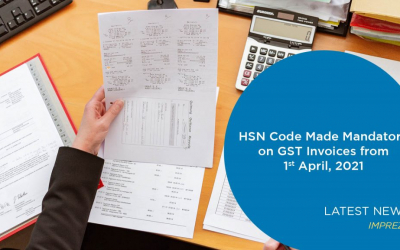
Accounting is the measurement, processing and communication of financial and non-financial transaction of business entities. Some also refer to it as the science and art of tracking monetary events. This measurement, processing and communication require numerous financial statements to be prepared from time to time for various purposes. It starts with preparing journal entries for each transaction, followed by posting them in the ledger account.
The general ledger is the main record-keeping document of the company’s financial reports. It keeps a summary of every transaction under separate heads and makes the lives of business owners and accountants simpler.
Why do businesses create general ledger?
The general ledger is a means of recording the financial accounts of a company. Businesses following a double-entry bookkeeping system create the general ledger account. Herein every transaction is entered twice, once as a debit and then as a credit.
Businesses follow this method since it makes the classifying of transaction a lot simpler.
Some other benefits of preparing a general ledger are-
Summarise transactions: The business transactions are summarised in the general ledger. All the transactions relating to a head come under a single tab. Thus, it becomes easier to keep track of transactions and take decisions.
Helpful in preparing trial balance: Ledger accounts are an integral part of accounting. A business can’t prepare a trial balance sheet without preparing ledger accounts. This is simply because trial balance is prepared by taking balances of the ledger accounts.
Helps in determining profit– Ledger account balances are necessary for preparing crucial financial statements of a business. These statements give us a clear picture of the profit or loss of a business.
Helps with taxes: A ledger account is highly beneficial when calculating tax liability for your business. It saves you all the trouble of running through each receipt to identify and record revenue and expenses. Since you’ve already posted every transaction in the general ledger, it saves you time, effort and potential loss of money.
Types of General Ledger account
Asset Account
An asset is a resource owned or controlled by a business entity that can derive positive economic value. These resources can be tangible as well as intangible.
In this section, we record all the journal entries related to the assets of the organisation. There can be multiple ledgers for various assets. The asset accounts can be grouped as current assets and long-term assets. It includes cash, accounts receivables, inventory, investments and fixed assets.
Liability Account
A liability is anything that a business entity or an individual owes. It is a result of transactions done in the past. An obligation (liability) on you becomes an asset to the party you owe.
Liabilities can be grouped as current and long-term. Herein, the entity records its obligations, debts, customer deposits and prepayments, etc. The liability account may include notes payable, accounts payable and accrued expenses payable.
Revenue Account
Revenue is the income generated by sales of goods and services related to a business’s primary operations. They are also known as ‘gross sales’ in business terms.
Revenue can also be defined as the asset earned by a company’s business activities. In this section, all the journal entries related to cash or receivables received for sales of good and services are included. The revenue account is usually credited as the income is earned. Only in cases like sales refund or good return, we debit the revenue account.
Expense Account
In accounting terms, the expense is the cost incurred or money spent by an entity to generate revenues. Businesses record them on cash as well as on an accrual basis.
This section records all the transactions related to expenditure or payables resulting from an action carried out to increase income. An expense account is debited as the expenditure is incurred.
Stockholder’s Equity Account
Equity is defined as the money funded by the owner or stakeholder of a company. It includes both, money funded in the initial start-up of a business and its continuous operations. Also, the stockholder’s equity represents the remaining value of assets after all the liabilities are paid off.
It can be calculated by deducting total liabilities from total assets. And, another method to do so is to adding share capital to retained earrings and subtracting treasury stock.
How to prepare a general ledger?
Before they start preparing the accounting ledgers, businesses must first record all the transactions as journal entries.
Journal entry is the first step of the accounting system. It refers to the act of recording all the business transaction. Every transaction is taken into the record, and the debit and credit aspect of the transaction is determined.
Now, once journal entries are recorded, the accountants identify separate heads start preparing an individual account for each head. For example- cash, stock, machinery, accounts payable, etc. These are ledger accounts.
We record the credit aspect of a journal entry on the credit side of the ledger account. Similarly, the debit aspect of an entry is recorded on the debit side of the concerned ledger account.
The entries are added date-wise into the ledger.
Once all the transactions are posted in the respective ledger accounts, we start the process to close the accounts.
Now, we calculate the totals on each side, debit and credit of the ledger account. If the totals are equal, our task here is done. But in other cases, when the sum is not equal, we subtract the lesser total from the higher one. And the balance is added into the ledger account as a separate record. It is then carry forwarded to the next month/year.
The process of posting in ledger accounts is a lot simpler than it sounds. It can easily be automated since it is based entirely on journal entries.
Nowadays, businesses use software to carry out such accounting tasks. Imprezz is a cloud-based accounting and billing software serving all accounting demands of SMEs. It has inbuilt GST compliant invoice templates, which you can further modify to make your billing process smoother.
Opt for a 14-days free trial today!
ALSO READ:
How to Select the Best Accounting software?


